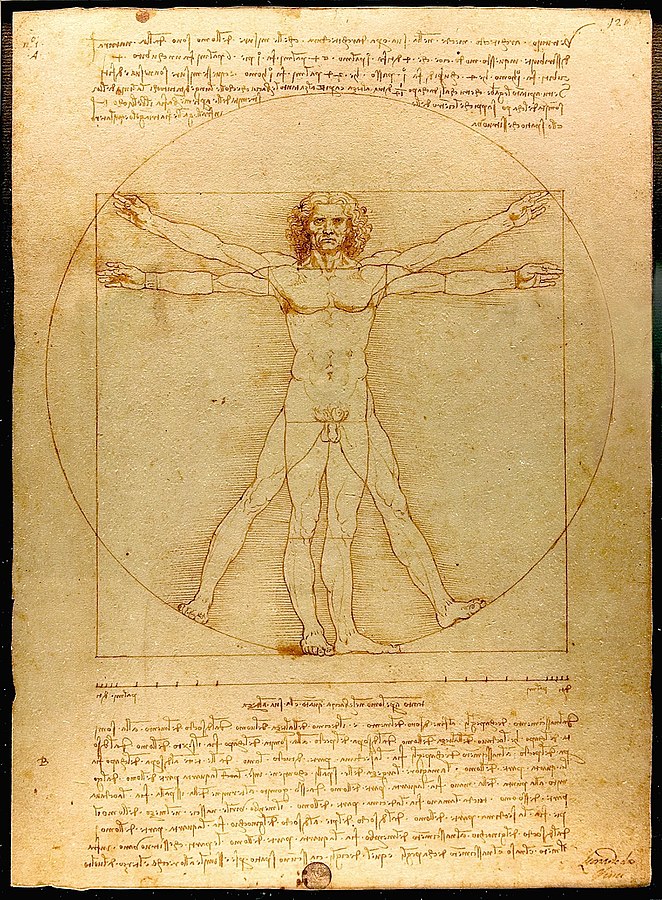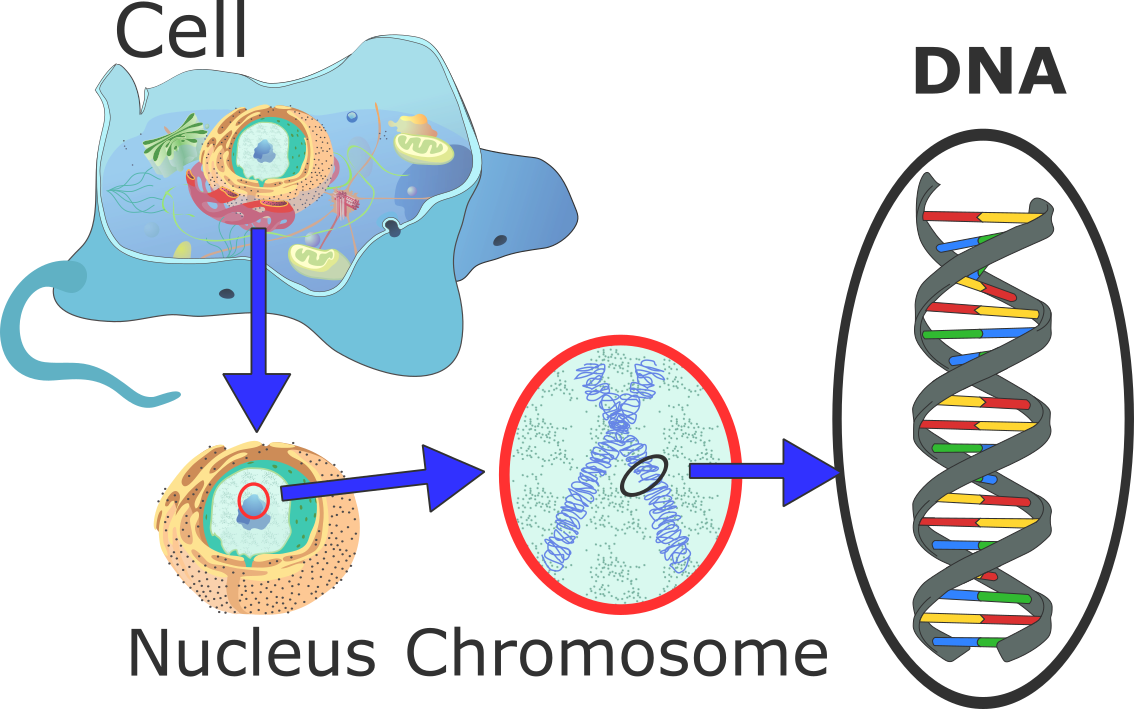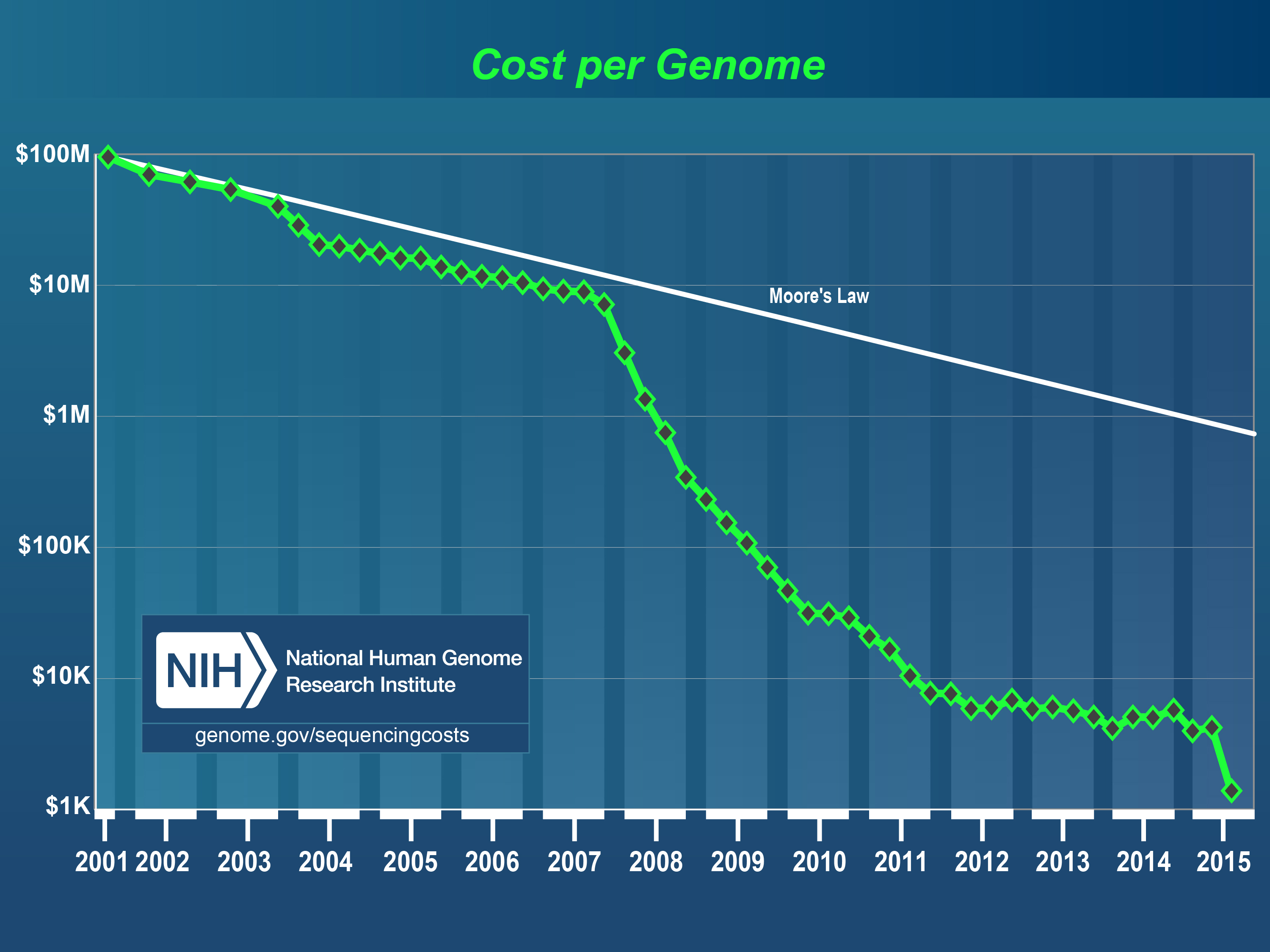The anatomical drawings of renaissance artist and inventor Leonardo da Vinci fascinate many - especially considering their age. The most famous of those drawings, drawn in 1490, depicts the figure of a man in two positions superimposed on each other and placed in a circle and a square. Leonardo da Vinci created the drawing based on the notes of ancient Roman architect Vitruvius who observed correlations between ideal proportions in human anatomy and geometry.

This image is the work of Luc Viatour: Luc Viatour/https://Lucnix.be
Vitruvian Man
In the drawing, now informally known as the 'Vitruvian Man’, the man’s arms stretch away from his torso in both positions - one with his arms stretched horizontally and the other with his arms angling upward. Similarly, the man’s legs are also in two positions - one with his legs together and the other with his legs angling outwards. By the proportions of his arms and legs relative to his torso, the ‘Vitruvian Man’ traces both the circumference of the circle and the sides of the square. Interestingly, the center of the square and the circle are not the same.
The anatomical studies of Vitruvius and da Vinci bring attention to the idea of design in nature in the form of the human body. They also suggest the notion of the ‘ideal’ body in terms of the proportionality and symmetry of the different parts relative to one another. The drawing combines math and art. The proportions between different parts of the anatomy (e.g. the length of the outstretched arms equals the height of the man) embody mathematics, and the drawing of the human anatomy itself manifests art. The Vitruvian Man can be understood as a renaissance era exploration of design in nature and particularly as an investigation of humanity’s place in the universe.
DNA and the Human Genome
In recent times, the increasing knowledge of the code of life - DNA and particularly, the human genome, first sequenced in 2001, represent one of the more fascinating developments. In this new 'era of genomics’, the unmasking of the secrets of the genome and the growth in knowledge of associations between genotypes (genes) and phenotypes (observable physical health characteristics) augment the notion of design in nature.
Swiss physician Friedrich Miescher first isolated DNA, or DeoxyriboNucleic Acid, in 1869 and found it to reside in the nuclei of all cells containing nuclei (as opposed to bacteria cells and in humans red blood cells and cornified cells in the skin, hair, and nails which do not contain nuclei). Bacteriologist Alfred Hershey and his assistant Martha Chase confirmed DNA to be the carrier of genetic information for all living organisms in 1952, and a year later in 1953, molecular biologists Francis Crick and James Watson famously identified its double helical structure. DNA is a molecule composed of two strands of polynucleotides coiled around each other to form a double helix. The polynucleotides consist of four nitrogen containing nucleobases (cytosine (C), guanine (G), adenine (A), and thymine (T)) which are bound to each other in the strands according to base pairing rules (A with T and C with G). These base pairs encode the genetic information contained in DNA via strings of four nucleotide combinations: A-T, T-A, C-G, and G-C. The backbone strands of DNA are comprised of sugar and phosphate molecules.
 Eukaryote_DNA.svg: *Difference_DNA_RNA-EN.svg: *Difference_DNA_RNA DE.svg: Sponk (talk)
Eukaryote_DNA.svg: *Difference_DNA_RNA-EN.svg: *Difference_DNA_RNA DE.svg: Sponk (talk)
Genomics
Much has been learned about DNA and the human genome. What is called a gene is a basic unit of heredity passed from parents to their offspring that is responsible for a particular phenotypic trait or characteristic. A gene occupies a region of DNA and contains information to encode a protein which in turn enables a cellular function at a particular time and location in an organism’s development and life. Sequences of three nucleotides, called codons, encode amino acids in particular sequences to synthesize proteins.
The human genome contains 23 pairs of chromosomes with one chromosome of each pair inherited from each parent. Each set of chromosomes contains roughly 3.1647 billion base pairs or nucleotides containing 3,088,286,401 letters (equivalent to a book of 1.5 million pages - about 66 times the size of the Encyclopedia Britannica. The total data contained in the human genome equates to about 1.5 gigabytes and encodes an estimated 19000 to 20000 protein coding genes.
Genetic Variation
Considering all of the information contained in the human genome, interestingly, only 2% of it encodes genes and only .1% (~3.2 million nucleotide positions) varies from person to person. In order to evaluate variations within a population, genetic researchers study the associations of single nucleotides at specific positions in the genome with phenotypes. Referred to as a single nucleotide polymorphism or SNP, the presence or absence of these variants in the genome can indicate the susceptibility of individuals to disease. They can also indicate the efficacy of drugs and medications depending on their presence in a person’s genome. A well known case in which genetic information indicated an individual’s disease susceptibility involved Hollywood movie actress Angelina Jolie who had a double mastectomy and an oophorectomy (removal of ovaries) as a result of a family history of cancer and the presence of a mutation in the BRCA1 gene in her genome.
Studies of DNA and genomics also suggest the idea of design in nature when considering the volume of data encoded in the nuclei of every cell that contains a nuclei. Genomics combines molecular biology and computer science in the sense that every cell with a nucleus contains both chemical elements (molecular biology) and coded instructions (computer science) that direct the processes governing the development and function of the cell. DNA and genomics promise to open new frontiers in human health in the burgeoning field of precision medicine.
Precision Medicine
The introduction of genomics into healthcare is just beginning. These are the early days of a new paradigm in healthcare referred to as 'precision medicine' that uses genetic data to improve diagnoses and implement proactive care plans and informed healthcare decision making. In order to realize this vision, there are a number of challenges to overcome that include the skepticism, ignorance, and resistance of providers, a paucity of informed counselors and providers in the area of genomics, and the costs of performing genomic sequencing.
Since the sequencing of the first working draft of the human genome only 16 years ago by famed biochemist and geneticist, Craig Venter, many developments materialized. The refinement of methodologies and the introduction of sequencing technologies resulted in the realization of dramatic reductions in sequencing costs. This trend is likely to continue. As genomic knowledge accumulates, its utility in clinical decision making is likely to accelerate. The information age and the internet has empowered patients to take more active and informed roles in healthcare decision making such that in many cases in focused areas, patients now know more than their providers.

Conclusion
The notion of design in nature with regard to the human organism has gripped the imagination from the Vitruvian Man to DNA and the human genome. The arc of knowledge and understanding of health and the human being has followed an exponential path from the anatomical studies of the renaissance era to precision medicine and the genome-wide association studies of the present day. Healthcare has followed a similar path and is now in the midst of a changing paradigm from a ‘one size fits all’ mentality of common courses of treatment for a set of symptoms to a new era of personalized or precision medicine in which the characteristics and circumstances of individual patients guides the tailoring of care plans and treatments. Indeed, in this new era, individual patient data, including in many cases genomic data, holds the keys to better health.
